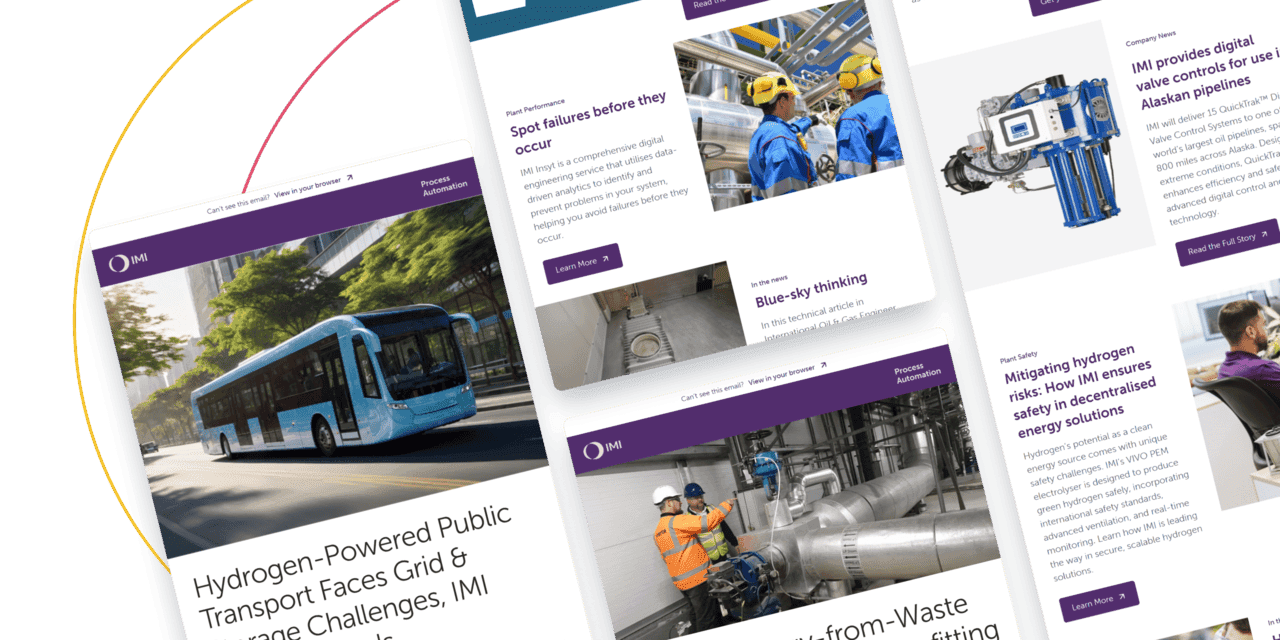
BLOG
Cleanability, maintainability, durability, how IMI is reimagining sanitary production

Written By IMI Publications
March 7, 2025
Cleanability is a critical factor for sanitary product manufacturers. Production managers must ensure that runs are consistent and that no residue or contamination is left behind once production commences on a new batch or product.
The cleanability issue cuts across different sectors, yet the stakes are especially high for a select few. For some companies, such as those producing fine chemicals, a poor or defective batch will result in product losses, downtime, and other ultimately avoidable costs. However, for those in pharmaceuticals, this situation could lead to irreparable damage, both reputationally and to the bottom line
Cleanability is closely tied to process control, and achieving a good degree of process control depends on the type of valves a site uses. In recent years, we have paid close attention to this area, collaborating closely with customers to deliver a novel range of flow control solutions where cleanability is built into the design and operation.
Here, we take a closer look at that process and its impact.
Common yet hardly trivial
Cleanability may seem integral to the operation of any modern manufacturing site, and in today’s market, it would be fair to assume the issue has been more or less perfected. However, this is not the case. It continues to cause problems for production facilities worldwide, with some incidents even hitting the headlines due to major outbreaks or serious oversight.
For example, Listeria in dairy and food plants has often been linked to equipment hygiene failures. Studies have shown that inadequately designed valves and other processing equipment can harbour and promote bacteria growth, especially when featuring geometries that are difficult to reach during a clean-in-place (CIP).
Yet despite this emphasis on sterile environments, some biotech and pharmaceutical companies have also suffered from cleanability issues, even with the more stringent sterilisation-in-place (SIP) process.
Insulin production presents a major challenge, relying as it does on genetically engineered bacteria grown in large fermentation vessels. This method has caused problems for many sites in the past, with valve selection sometimes playing a role.
For example, analysis from the American Pharmaceutical Review [1] has traced severe contamination back to damaged seals, worn diaphragms and improperly designed flow control solutions, such as weir valves. These types of valves can create so-called ‘dead legs’ or stagnant zones in a system. Where this occurs, contamination can lead to product quality issues, including microbial growth, affecting insulin or other biologics produced through fermentation or cell culture processes.
Tackling recurring problems
There are several reasons why valves present such a challenge for sanitary production. This variation and different production techniques are mainly why cases continue to occur even after increasingly stringent regulatory scrutiny.
We have identified the following areas throughout product development, with the appropriate technological measures now integrated throughout our technology range:
Dead spaces and complex internal geometries
Dead spaces are areas within a valve where fluid can become trapped, providing favourable conditions for bacterial growth or material build-up. Valves with intricate internal designs or unnecessary cavities make it more challenging to clean all surfaces thoroughly
Inadequate surface finishes
Rough or porous surface finishes inside a valve can trap contaminants, making thorough cleaning challenging. In contrast, smooth, polished surfaces help prevent dirt, biofilm, or corrosion buildup, facilitating more effective cleaning
Material compatibility
Materials that corrode or react with certain substances may accumulate residues that are difficult to clean. For example, valves made of non-corrosion-resistant materials can suffer from rust or scaling, further complicating cleanability
Assembly and disassembly
Some valves are not designed for easy disassembly, which is critical for effective cleaning. If the valve cannot be easily broken down for a deep clean, residues can remain.
Lack of self-cleaning features
Valves without integrated self-cleaning mechanisms or flow-cleansing designs struggle to prevent build-up over time, eventually requiring manual intervention to eliminate all sources of contamination.
Reimaging valves for truly clean production
For over thirty years, we have increasingly specialised in clean valve technologies for the pharmaceutical industry. Our products for this sector focus on delivering cleanability, drainability, reliable performance, and robustness. Over time, we have been increasingly able to meet our customers’ requirements by tailoring our technologies to the specific needs of the pharmaceutical sector.

Igenix Diverter Steam Valve
With global pharma industries hungry for innovation, our manufacturing site in Pennsylvania has proven successful in delivering specialised technology for clean utilities. Products like our Ingenix® Radial Diaphragm Valves (RDV) feature more intense automation features, more controlling mechanisms, and the ability to self-drain.
In practice, this means that our RDVs can drain as well as or better than the requirements set out in ASME BPE-2016 [2], the international standard covering the design and manufacturing of all equipment used to produce biopharmaceuticals. RDVs can enhance operational safety and the effectiveness of bioprocess applications and have proven highly successful across the industry.
Working directly with our customers in the pharma sector has also generated other innovations, such as self-cleaning valves. Developed through our collaboration with a major pharmaceutical company looking to replace traditional diaphragm and ball valves used as sterile barriers in water for injection (WFI) loops, our self-cleaning valve solutions incorporated Adjust-O-Seal® technology. This resulted in both an upstream and downstream seal. Our technology thoroughly cleaned the valve internals while in the open position during the WFI process, providing full unobstructed flow and bidirectional ultra-tight shut-off, offering significant advantages over traditional floating ball designs. When the system is sterilised, our valves open to introduce clean steam into the process loop, with a purge port in the valve body draining any residual condensate that may occur during the cleaning cycle. Our ability to collaborate closely with the customer and develop an ultra-sanitary process valve that seals on the upstream seat while performing flawlessly in this application generated savings of many thousands of dollars.
Customer-focused success
The secret of our success in product development initiatives for the pharma sector is simple: they are customer-focused. Our new products are developed based on the needs of our customers, future customer projects, or simply by listening to the industry’s demands. What we do best is take care of our customers. We listen to their needs, challenging us to develop and manufacture unique process solutions to resolve customer problems.
Keep in touch
Stay up to date on all the latest news and articles from IMI.

Keep in touch
Stay up to date on all the latest news and articles from IMI.


Keep in touch
Stay up to date on all the latest news and articles from IMI.
Engineering the future together
Looking for the perfect flow control solution? Our experts specialise in providing tailored solutions to meet your unique needs. Let us help you achieve optimal performance, efficiency and safety.